Code of Manesa - as an illustrative source on the history of knightly equipment of the beginning of the XIV century
Shields, steel helmets and armor you have.
Ready for the faith to fight your dedicated sword.
Give me strength too, oh my god, for the new glorious sech.
I will take a rich booty there.
I do not need gold and land to anything,
But maybe I will, singer, mentor, warrior,
Heavenly bliss forever honored.
In the city of God across the sea, through the trees and ditches!
I would sing joy again and did not sigh: alas!
No, never: alas!
(Walter von der Vogelweide. Translation by V. Levik)
To begin with, we begin by noting that the so-called “Codex of Manes” is one of the most famous illustrated manuscripts of the Middle Ages and the most valuable historical The source of our information regarding the knight's equipment of the first decades of the XIV century. It is called “Maneski” because it was compiled by order of a noble knight from the Maness family, Rüdiger von Maness the Elder, a member of the city council of the Swiss city of Zurich.
The Codex Manesk in the exposition of the Český Krumlov castle.
In Zurich, it began to create somewhere around 1300 - 1315. The text was written in Middle High German, but in its content it is nothing but a collection of secular poetry of that time. The manuscript is executed in a beautiful Gothic font, and there are practically no punctuation marks in it. But there are beautiful capital letters at the beginning of each paragraph.
The codex verses were collected immediately 110 medieval poets, ranked by their social status. Then verses of more 30 authors were added to it. However, the collection was never completed, and not all the materials in it were streamlined. In particular, there are still a few blank pages in the text.
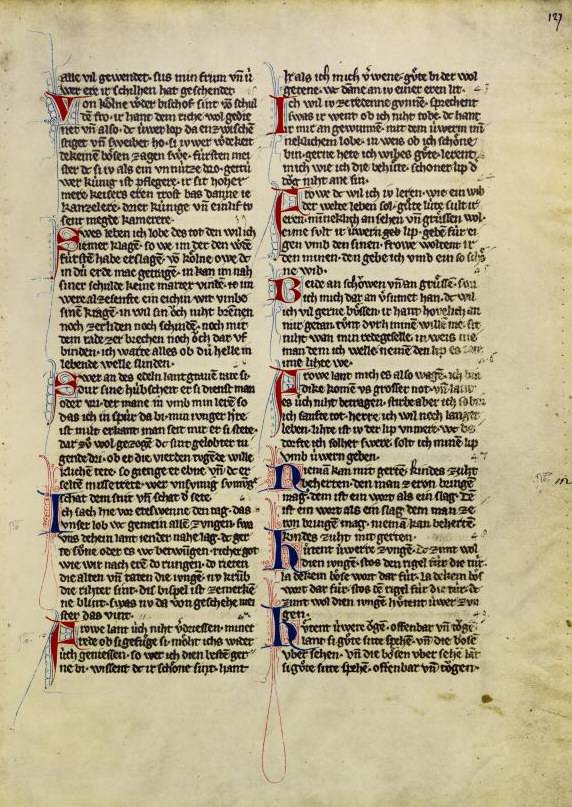
The “Mannes Codex” page with poems by Walter von der Vogelweide.
All in all, in this 426 manuscript, parchment sheets having 35,5 dimensions on 25 cm and 138 miniatures that depict medieval poets mentioned in it. And these miniatures are the main value of this Code. It is hardly an exaggeration to call them the masterpieces of medieval book miniatures. They depict the feudal nobility in clothes of heraldic colors, battles, various courtly and hunting scenes, that is, the whole life of that time.
True, this manuscript was completed a hundred years after the death of some of the minnesinger poets (the German equivalent of French truwer or troubadour), whose poems were placed in it. That is, the reliability of a number of heraldic information of this manuscript cannot be established with absolute certainty, because the coats of arms often changed, and even for one generation, and for a hundred years it is the life of three generations, and even then four.
The library building of the University of Heidelberg.
The “Codex Codex” is kept in the library of the University of Heidelberg in the city of Heidelberg in Germany. However, there are several copies made later. One of them is located in the castle of Cesky Krumlov, only it lies there under glass and it is, alas, impossible to see it, even for scientific purposes.
Well, for now we’ll just take a close look at some of his illustrations and see what information we can get from them.
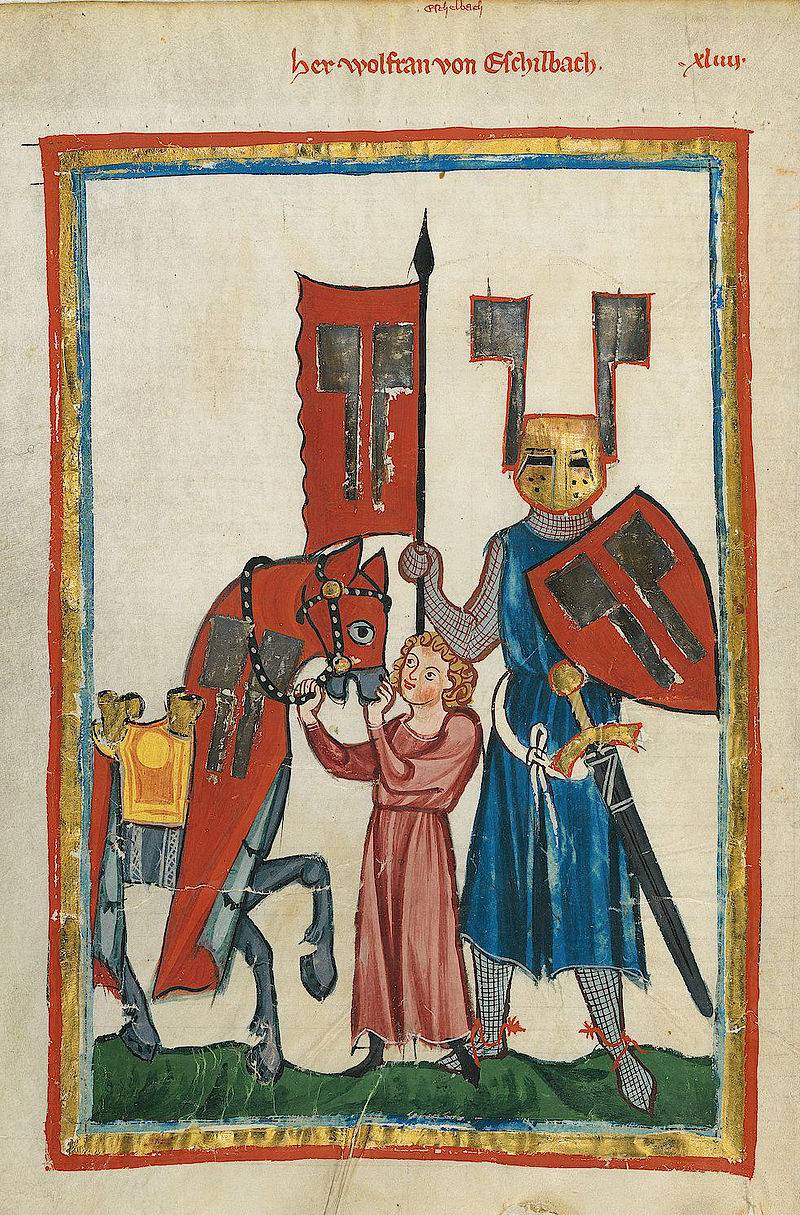
On this miniature we see Wolfram von Eschenbach in full knightly gear. And here the question immediately arises: what is it on his helmet? Horns? Does not look like it. Sekira? Also seemingly not. One thing is clear - these are heraldic figures, since they are depicted both on the shield and on the pennant.
The miniature with the image of Walter von der Vogelweide is interesting in that the coat of arms depicts a nightingale in a gilded cage and ... the same figure was adorned on his helmet. Original, is not it?
The image of Walter von Metz shows us a typical knight of this era. Heraldic clothing, including a surcoat and a blanket, so to speak, from head to toe, but on the helmet there is an ornament with a coat of arms not connected!
Minnesinger Hartmann von Aue is depicted in practically the same position. But he came more consistently to the question of identifying his personality, so that his helmet also adorns the image of the head of a predatory bird.
Well, this is Ulrich von Liechtenstein known to all - the most odious knight of his time. The one about which I already had my material on and who had cut his lip, and lived with lepers, and was tied by the hand under the window of the tower and that was all ... for the grace of his lady's heart, which was not at all young and not at all beautiful By the way, in the presence of a much younger wife, who, however, did not have anything against such a ministry. He flaunted in women's dresses, but the church looked at it through his fingers. Here and on this miniature he is depicted in the coat of arms of surcoat, but ... with the figure of the pagan goddess Venus on the helmet!
Schenk von Limburg was truly a dandy and original. There are feathered horns on the helmet, a surcoat of one color, a blanket of another, a coat of arms on the shield - three maces. Well, that's how he wanted ...
This miniature shows a curious reception of the then armed struggle. Riders seek to clasp each other by the neck and only after that strike with a sword. Original, do not say anything! Although this is not a real fight, but a tournament!
The helmet of the winner of the tournament match, Walter von Klingen, is decorated with feathered axes, although on his shield there is a lion-ramp. Interestingly, he struck his opponent with a spear into the helmet with such force that it pierced him with blood!
Another knightly fight, with splashes of blood from the elbow cut by the sword. Well, and here the knight’s right shield is interesting. It means they were still used, despite the fact that it was iron shields that were in fashion.
In this miniature with the poet knight Heinrich von Frauenberg, the fight went without blood, but it is interesting how the manuscript shows the position of the riders relative to each other. They jump, having an adversary to their right, that is, the force of the strike of the spear during a collision is maximum. It was only then that they were separated by a barrier and set so that the movement relative to each other was left-hand. In this case, the spear hit the shield at an angle of 25 degrees, and the force of impact was significantly weakened. The creators of the film “History of the Knight” should all remember this!
Kristan von Luppin fights with some Asian. For some reason, he is wearing only a balaclava basement, and there is no horse blanket.
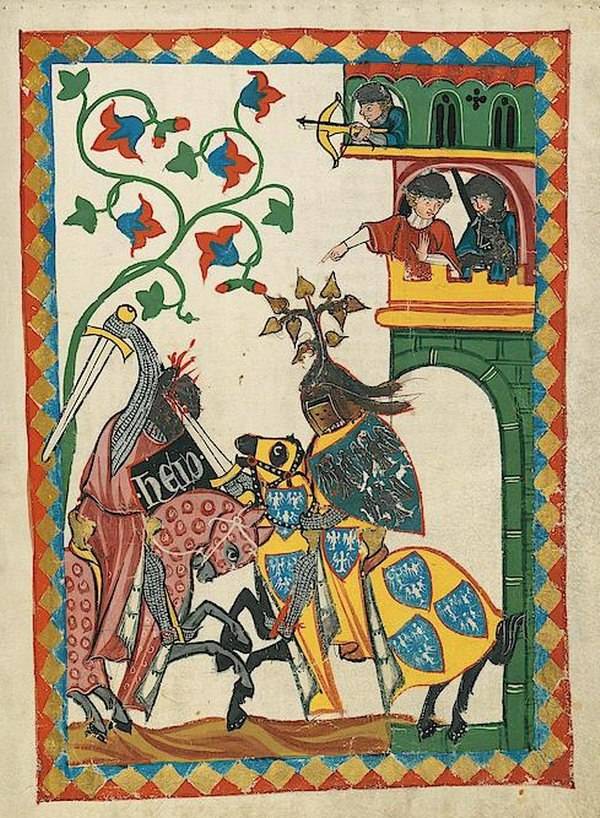
This miniature shows us the effectiveness of the then knightly sword. With a good hit, they could completely cut the tophelm helmet completely closed!
And it was possible both on horseback and on foot! True, it is known that the helmets were then made of iron and were not subjected to any special hardening. So nothing surprising in the fact that there is drawn, no. Yes, and it is unlikely that an artist for such a wealthy customer would draw something really non-existent. This would simply no one allowed. Such was the time then, although ... yes, there were also fictional characters on the pages of medieval manuscripts, and absolutely fantastic beasts, which no one forbade depicting. Only this one was a fantasy, always separated from the truth.
But the miniature on the page of the manuscript is clearly with the scene of God's judgment, since no armor on the conquerors is worn. And they use bakler-shields, that is, at that time they already existed and were used.
On this miniature we see the scene of the hunt. Noble gentlemen gathered to hunt, but the cows blocked their way. True, the knights who set off for her are still wearing chain mail armor and helmets, hemispherical-shaped basquets. In the hands of two rattles with wide tips and a crossbar immediately behind them, that is, the hunt is clearly serious. Crossbows are very well depicted, especially the one on the left. It can be seen and mount the bow, and a long trigger.
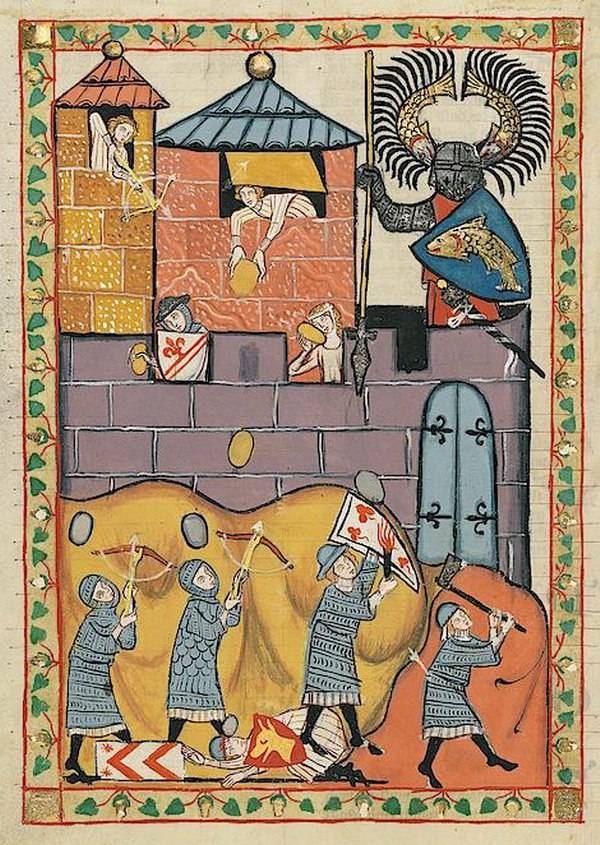
Here, crossbowmen in long mail shirts, worn over vertically quilted gambizons, are shooting at the besieged castle. Defenders also shoot from crossbows and throw stones on their heads, not only men, but also women. An arrow pierced the back of the warrior who smashes the gate with an ax, but he apparently does not notice it. Guarding the gates are no longer ordinary warriors, but a noble knight. On the shield he has golden fish and ... horns on a helmet of two golden fish, in addition also decorated with feathers.
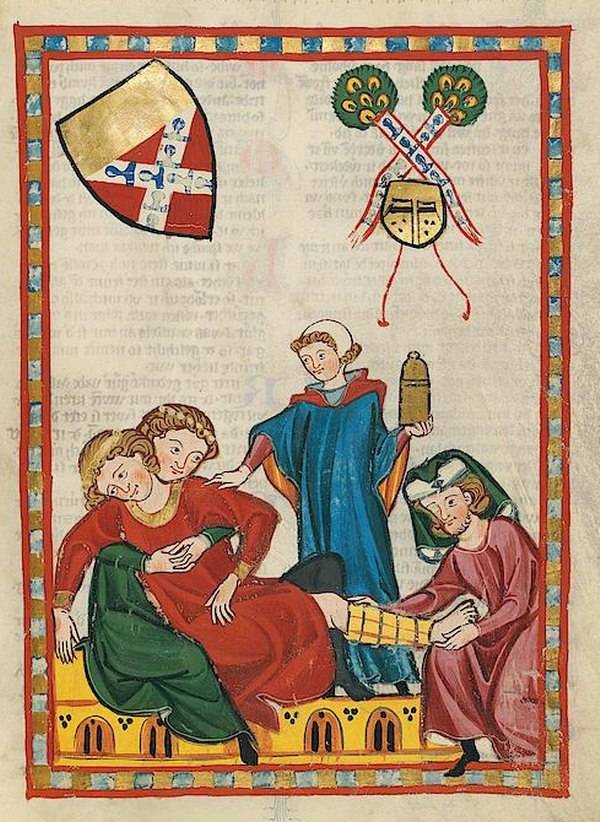
Well, this scene breathes peacefulness and care for your neighbor: a tire is applied to a broken leg.
Is not it true, considering the miniatures from this manuscript, we as if plunge into medieval life, and are transferred to that far and now incomprehensible time for us ...
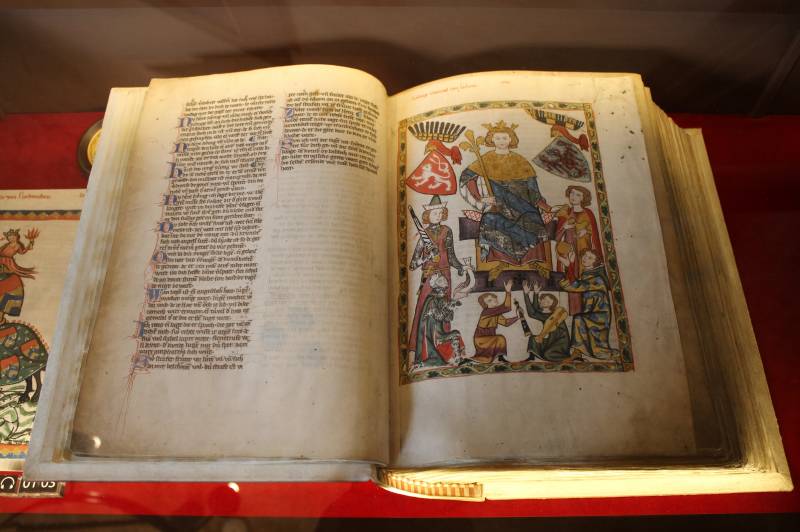

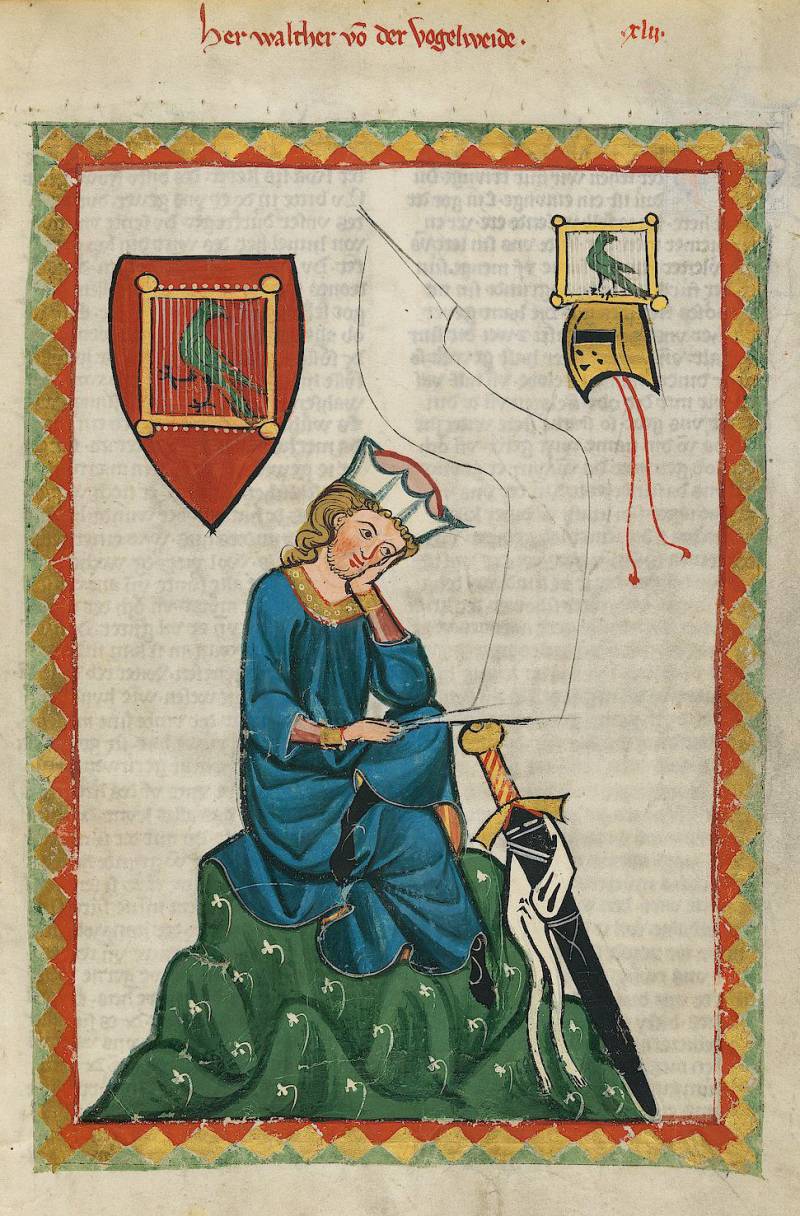
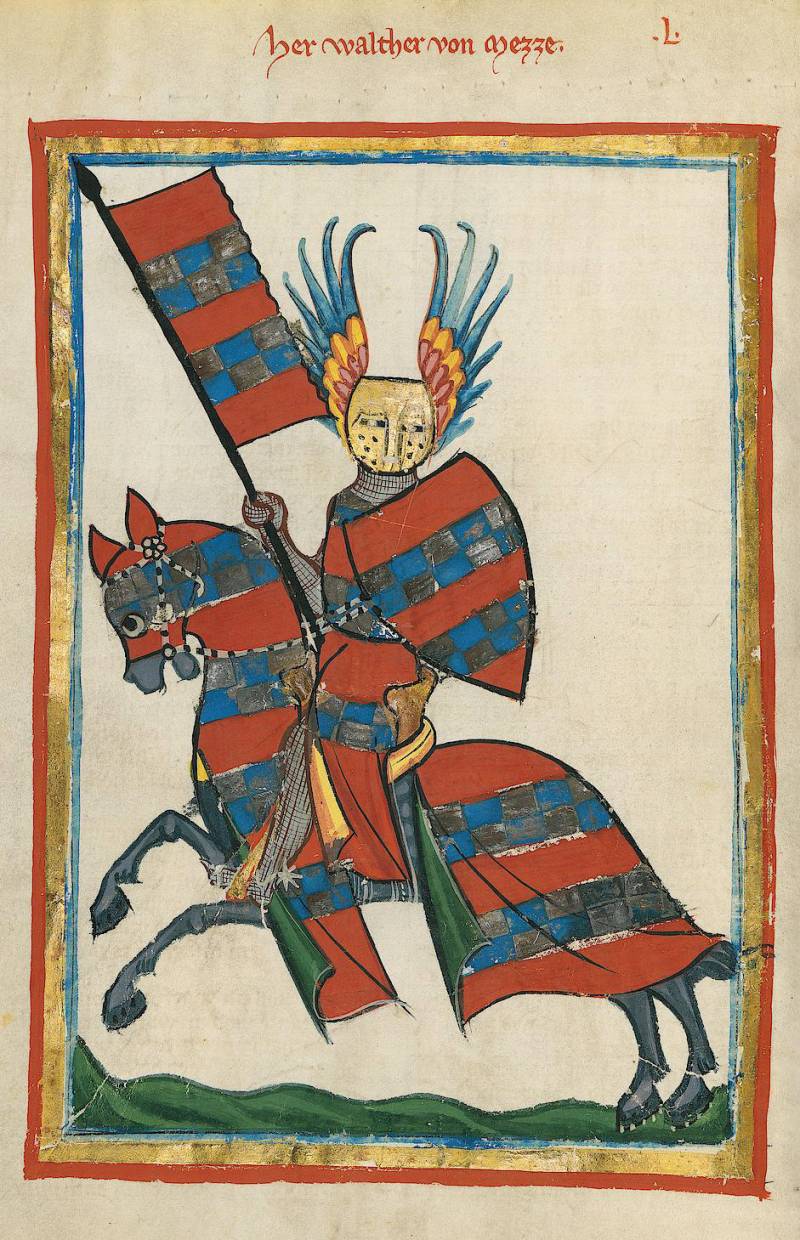
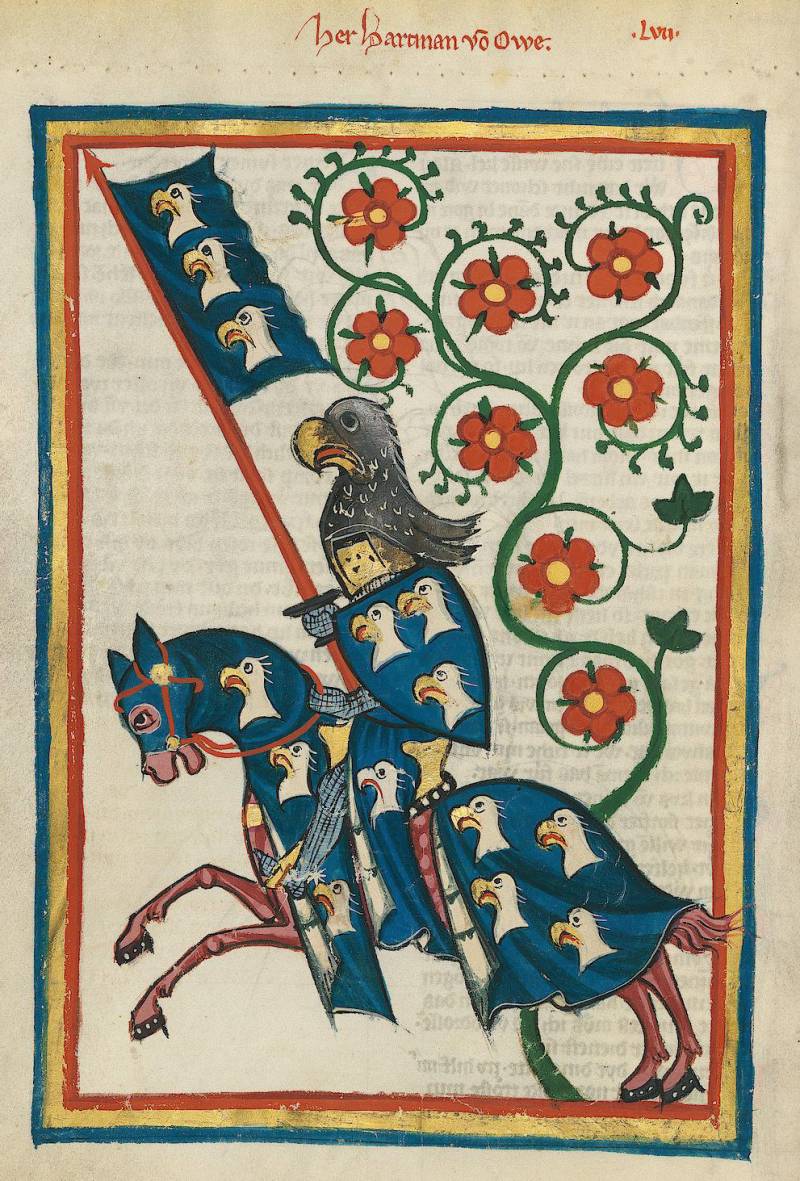
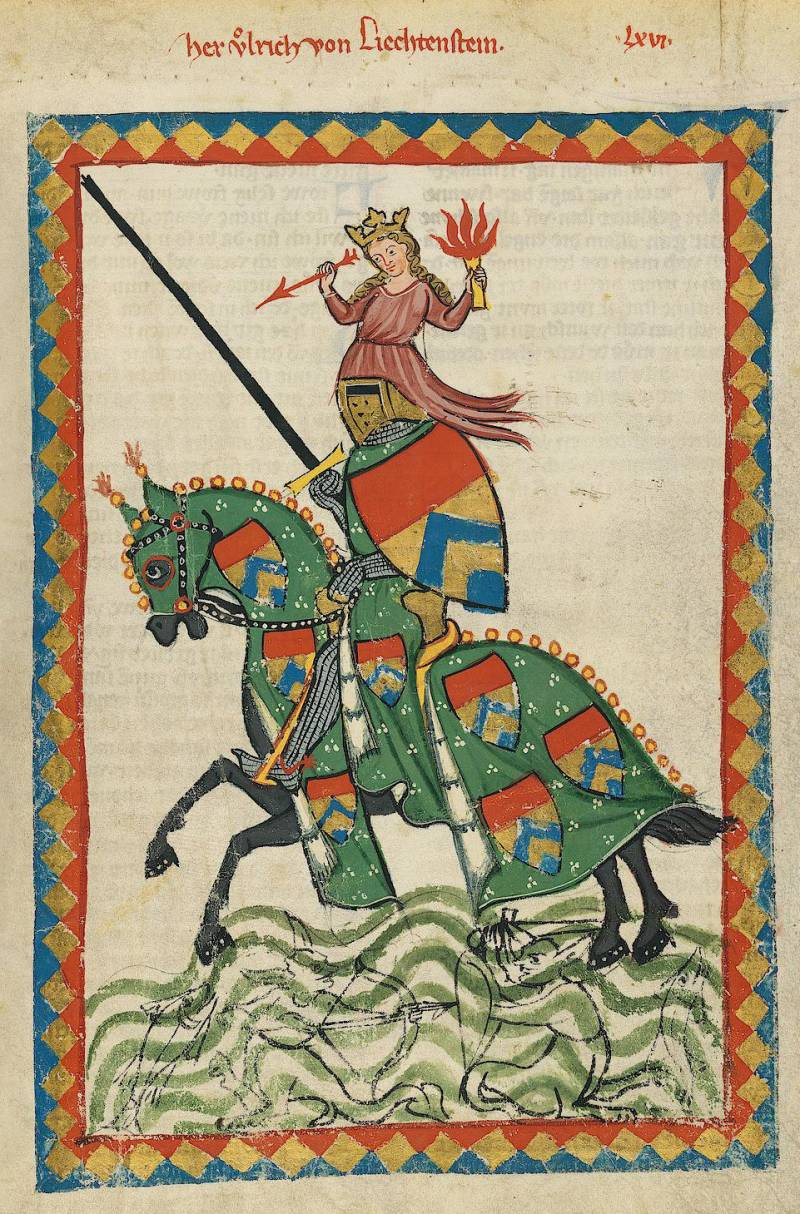
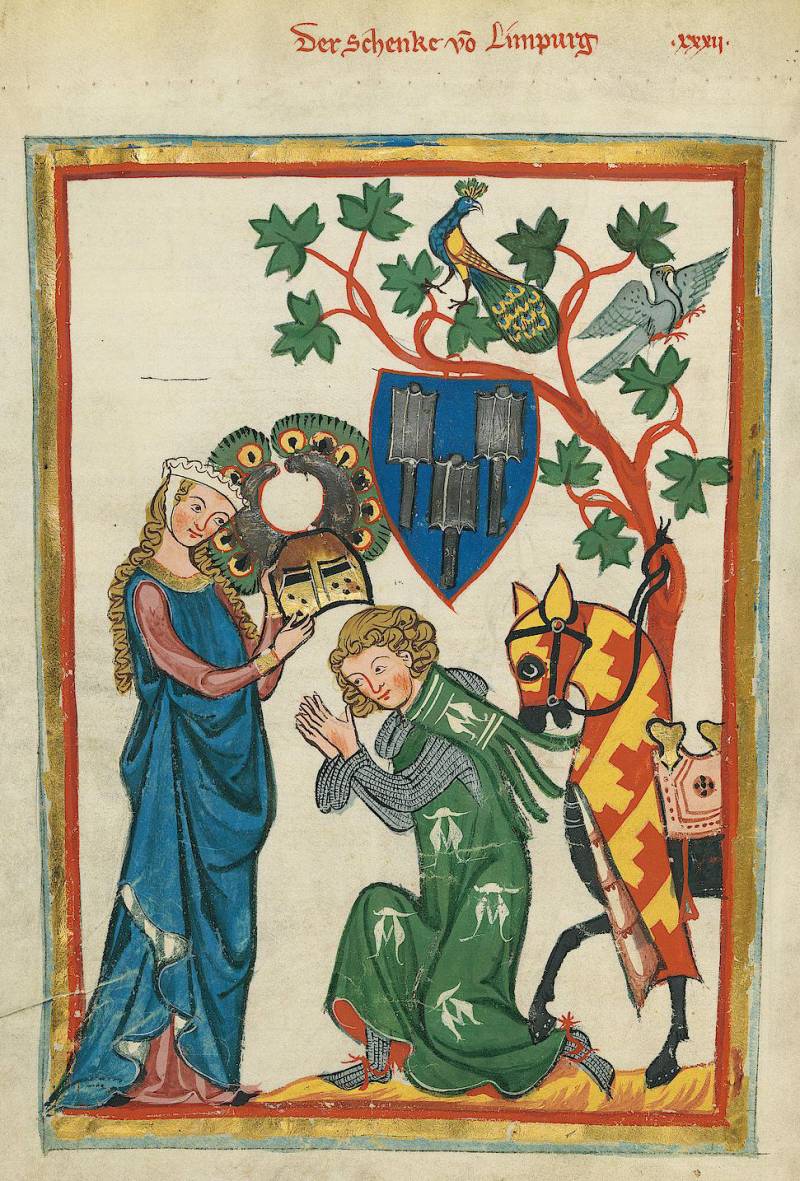
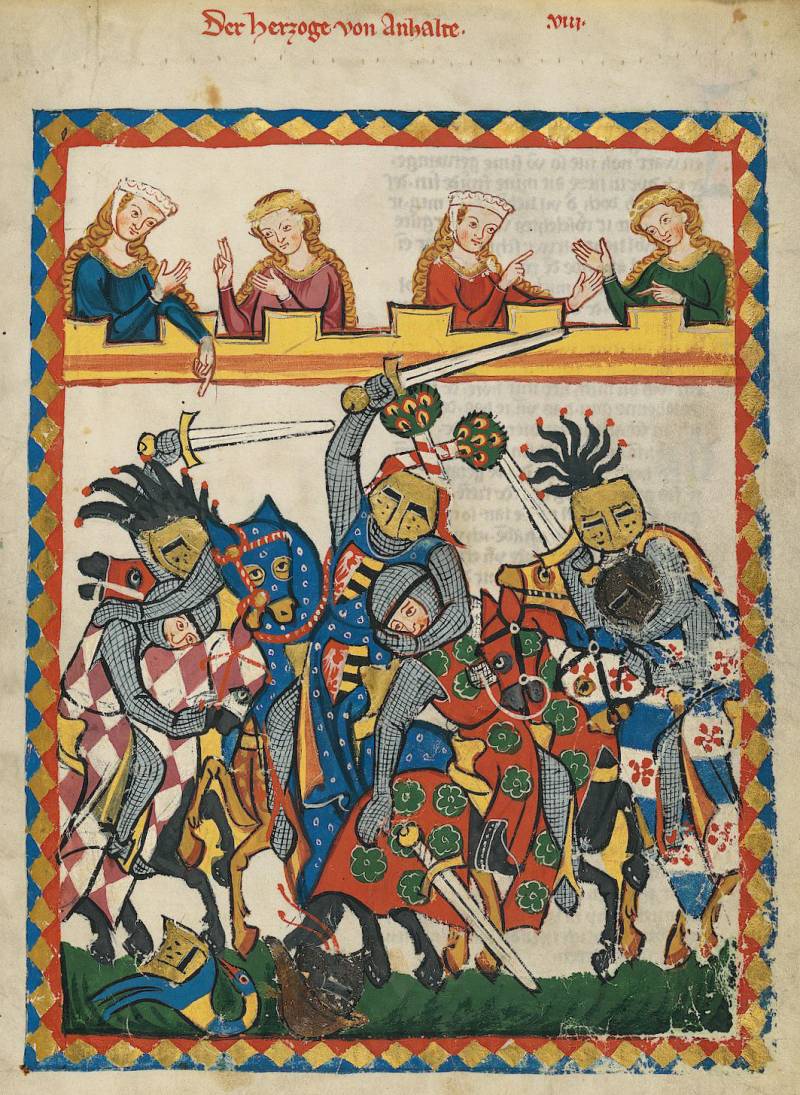
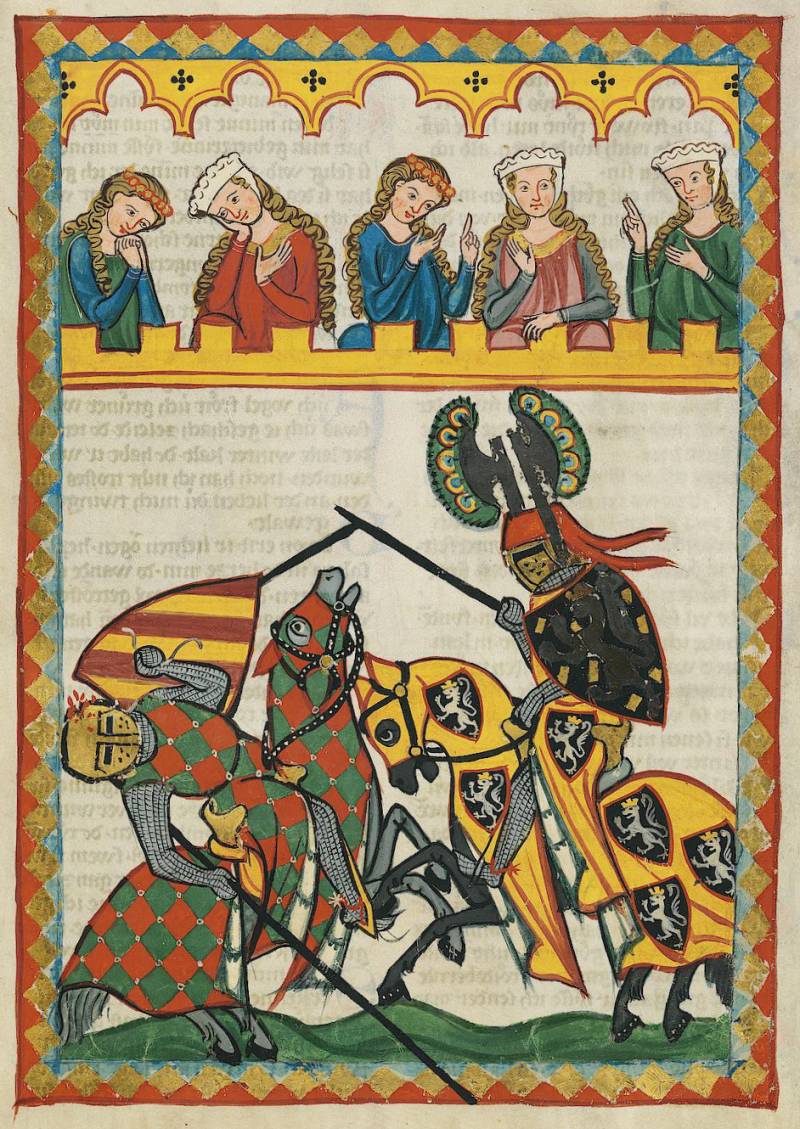
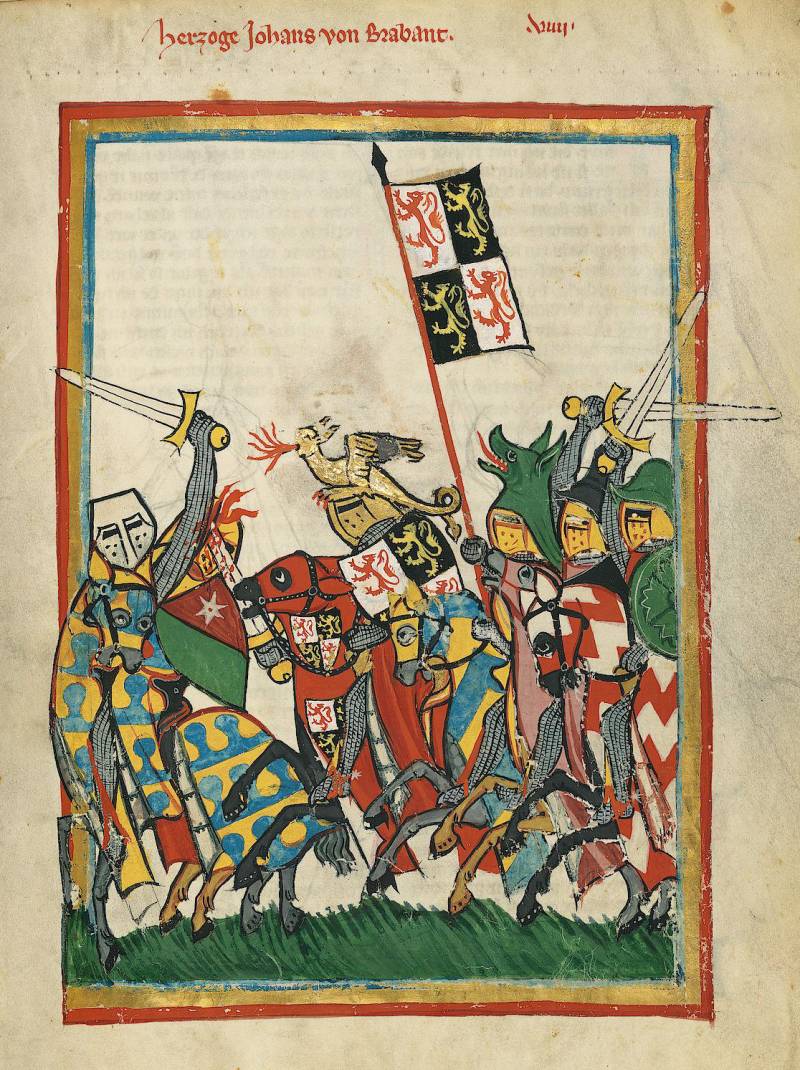
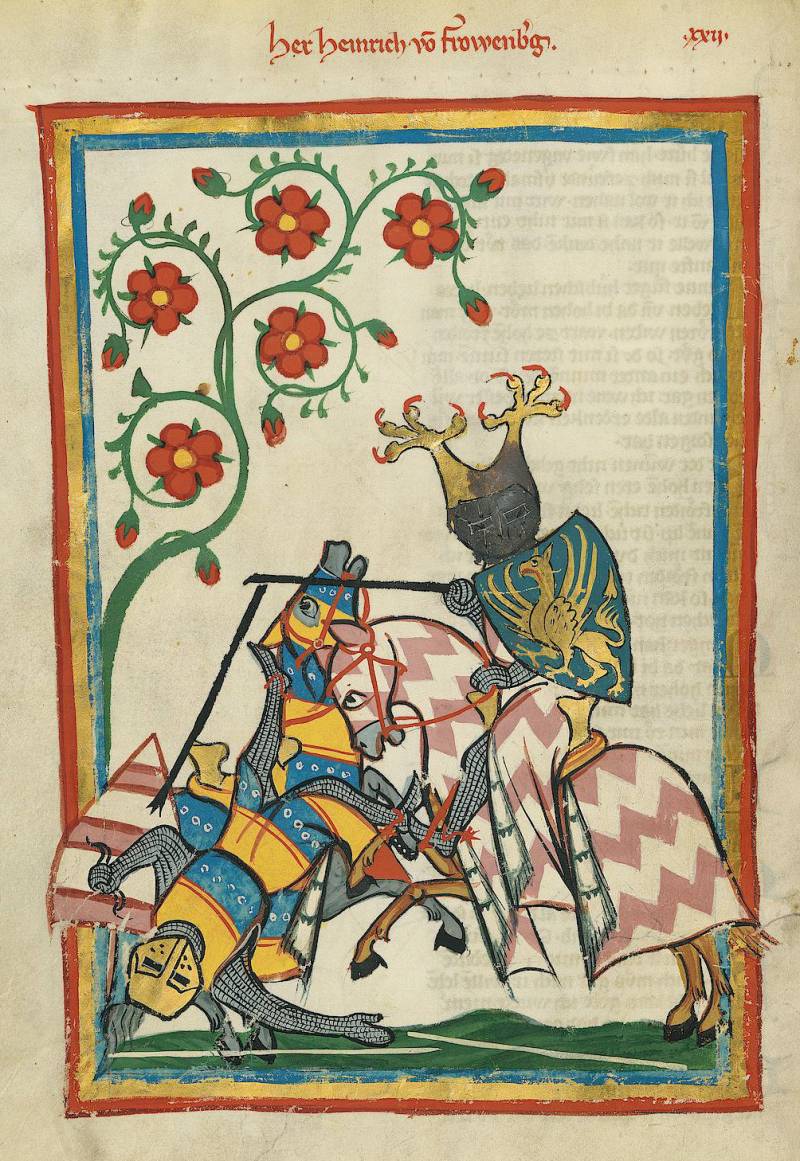


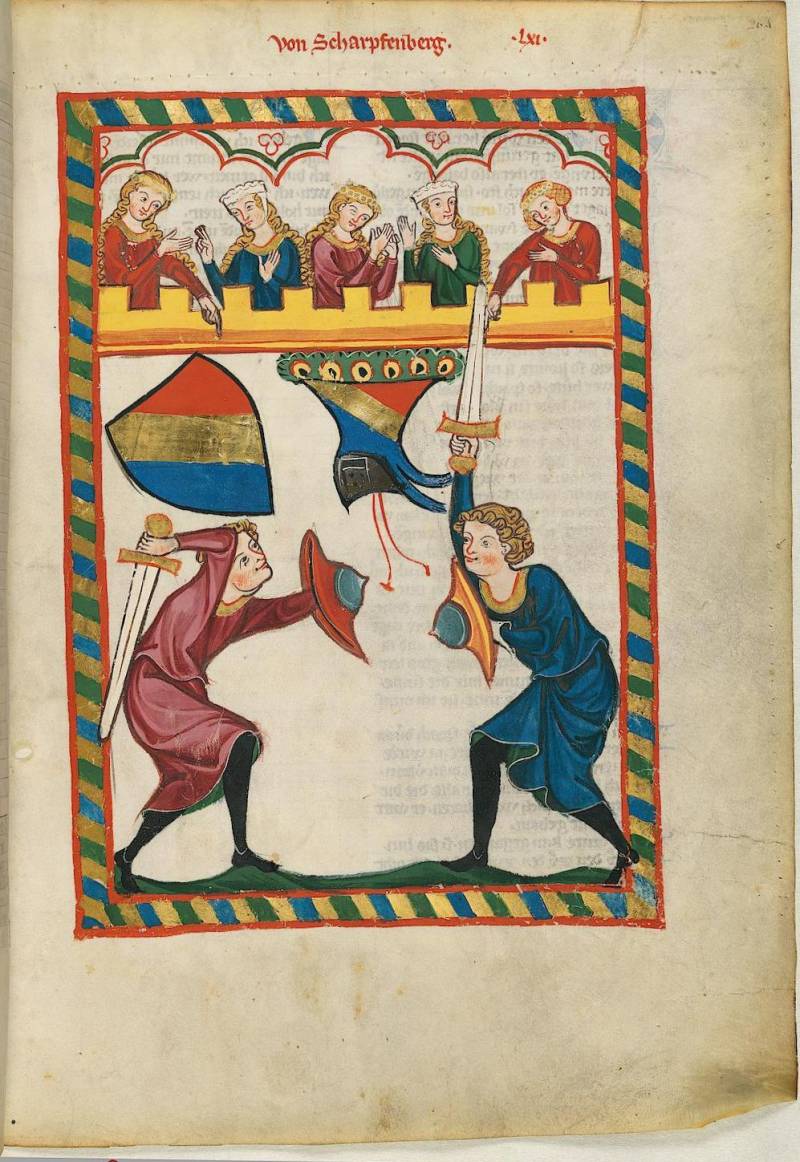
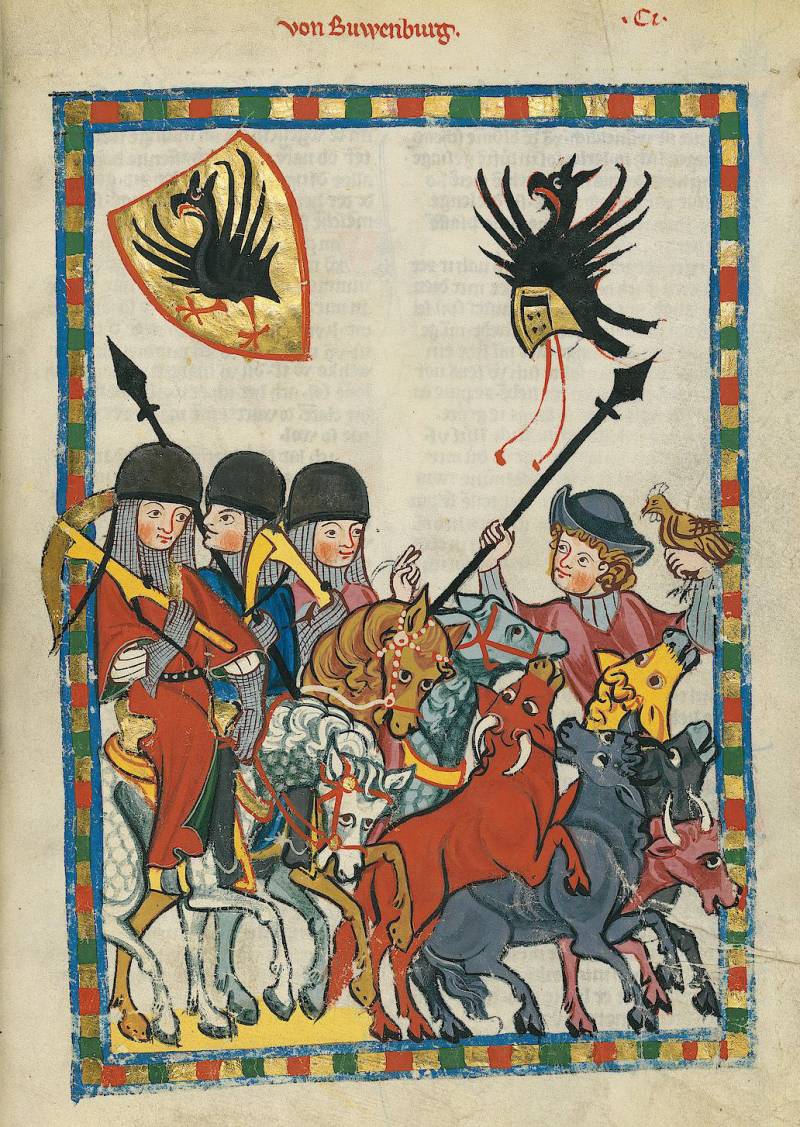
Information